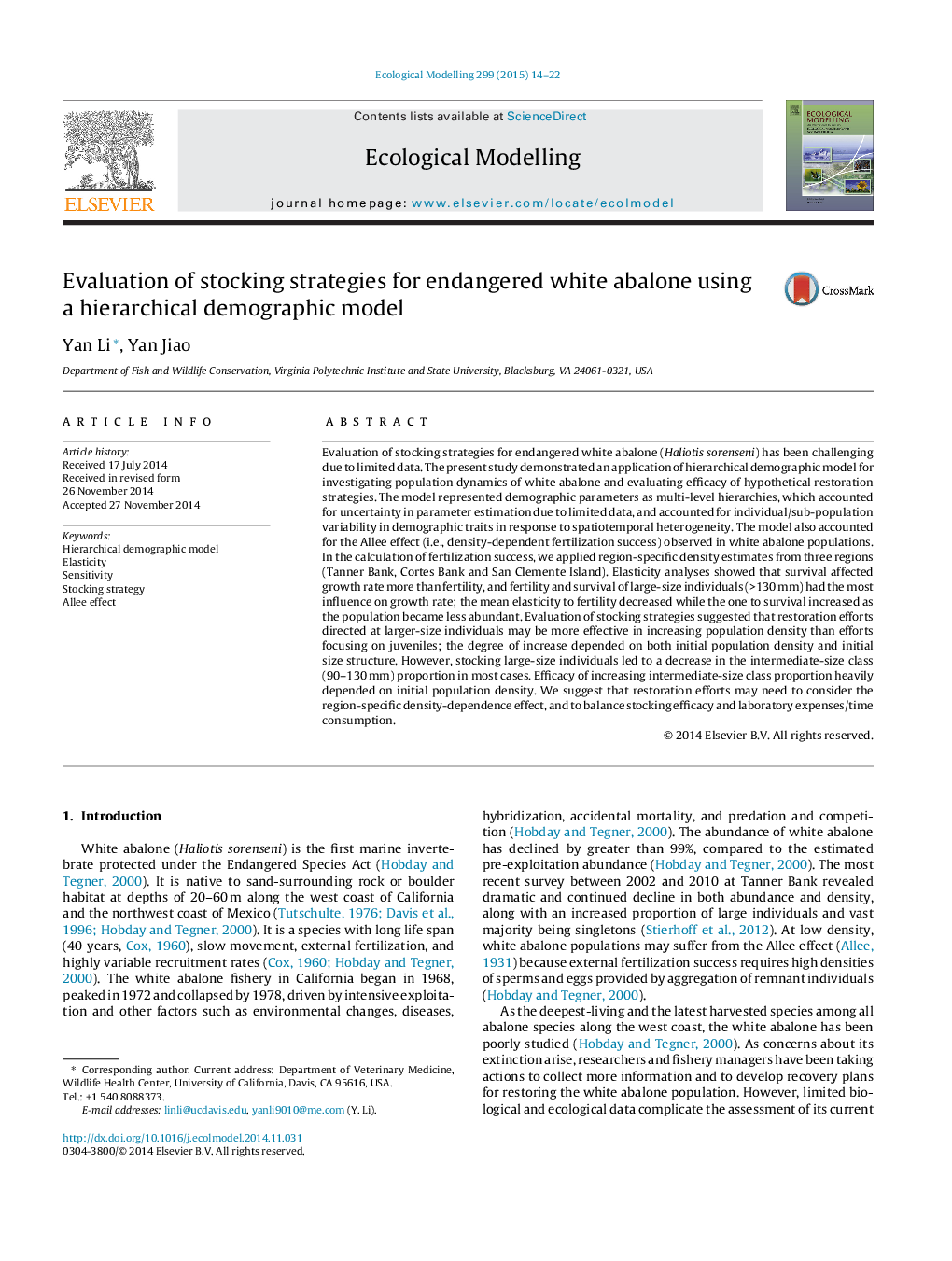| کد مقاله | کد نشریه | سال انتشار | مقاله انگلیسی | نسخه تمام متن |
|---|---|---|---|---|
| 6296711 | 1617447 | 2015 | 9 صفحه PDF | دانلود رایگان |
عنوان انگلیسی مقاله ISI
Evaluation of stocking strategies for endangered white abalone using a hierarchical demographic model
ترجمه فارسی عنوان
ارزیابی استراتژی های انبارداری آبزیان سفید در معرض خطر با استفاده از یک مدل جمعیت شناسی سلسله مراتبی
دانلود مقاله + سفارش ترجمه
دانلود مقاله ISI انگلیسی
رایگان برای ایرانیان
کلمات کلیدی
مدل جمعیتی سلسله مراتبی، قابلیت ارتجاعی، حساسیت، استراتژی جابجایی، اثر آللی،
موضوعات مرتبط
علوم زیستی و بیوفناوری
علوم کشاورزی و بیولوژیک
بوم شناسی، تکامل، رفتار و سامانه شناسی
چکیده انگلیسی
Evaluation of stocking strategies for endangered white abalone (Haliotis sorenseni) has been challenging due to limited data. The present study demonstrated an application of hierarchical demographic model for investigating population dynamics of white abalone and evaluating efficacy of hypothetical restoration strategies. The model represented demographic parameters as multi-level hierarchies, which accounted for uncertainty in parameter estimation due to limited data, and accounted for individual/sub-population variability in demographic traits in response to spatiotemporal heterogeneity. The model also accounted for the Allee effect (i.e., density-dependent fertilization success) observed in white abalone populations. In the calculation of fertilization success, we applied region-specific density estimates from three regions (Tanner Bank, Cortes Bank and San Clemente Island). Elasticity analyses showed that survival affected growth rate more than fertility, and fertility and survival of large-size individuals (>130Â mm) had the most influence on growth rate; the mean elasticity to fertility decreased while the one to survival increased as the population became less abundant. Evaluation of stocking strategies suggested that restoration efforts directed at larger-size individuals may be more effective in increasing population density than efforts focusing on juveniles; the degree of increase depended on both initial population density and initial size structure. However, stocking large-size individuals led to a decrease in the intermediate-size class (90-130Â mm) proportion in most cases. Efficacy of increasing intermediate-size class proportion heavily depended on initial population density. We suggest that restoration efforts may need to consider the region-specific density-dependence effect, and to balance stocking efficacy and laboratory expenses/time consumption.
ناشر
Database: Elsevier - ScienceDirect (ساینس دایرکت)
Journal: Ecological Modelling - Volume 299, 10 March 2015, Pages 14-22
Journal: Ecological Modelling - Volume 299, 10 March 2015, Pages 14-22
نویسندگان
Yan Li, Yan Jiao,
